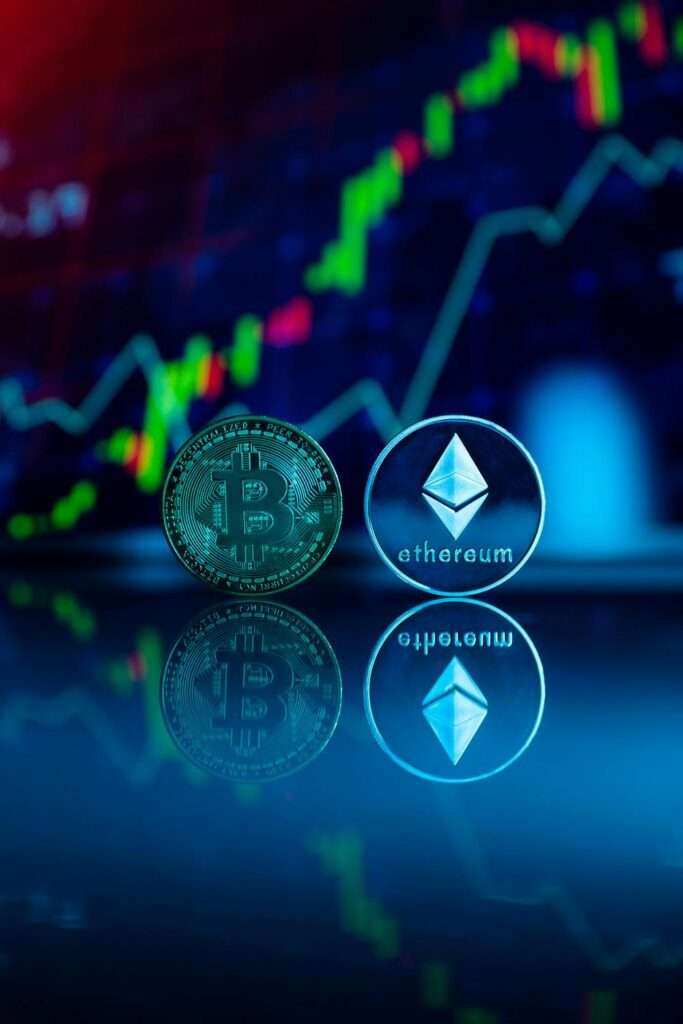Introduction
The crypto landscape is abuzz with the rapid adoption of Layer-2 solutions, particularly on Ethereum. These solutions are gaining traction for their ability to reduce transaction costs and improve speed, which opens up DeFi to a broader global user base. Key players such as Optimism, Arbitrum, and zkSync are leading this charge and transforming the DeFi ecosystem towards widespread crypto adoptions.
Why Layer-2 Matters

1. Lower Fees: The high gas fees associated with Ethereum have been a significant barrier. Layer-2 platforms solve this by processing transactions off-chain while maintaining Ethereum’s security.
2. Faster Transactions: These solutions are near-instant by nature, crucial for applications like gaming, decentralized exchanges (DEXs), and NFTs.
3. Increased Accessibility: More users can engage with DeFi, NFTs, and other blockchain-based services through the costlier barriers.
Key Players Driving Adoption
Optimism and Arbitrum: Known for slick scalability and adoption metrics, such platforms play a huge role in DeFi growth.
zkSync:
A zero-knowledge proof-based platform which gives higher security and efficiency.Base: A layer 2 by Coinbase. Recently hitting $2.7 billion in TVL, showcasing strong retail and institutional interest.
Effects on DeFi

DeFi projects which integrate with Layer-2 solutions have seen an enormous uptick in adoption:Solana and Aptos are also relying on innovative scaling techniques.The inflows of Liquid staking protocols such as Jito and Marinade mark growing trust in these solutions.
One of the most transformative applications of blockchain is Decentralized Finance, transforming traditional financial systems by bringing open, permissionless, and decentralized access to finance. But behind this exponential growth, various issues within the underlying blockchain networks also surface, in terms of scalability, a high rate of transaction fees, and congested networks. Ethereum is the most widely used blockchain for DeFi applications, and its popularity has come with many challenges. To overcome these challenges, the blockchain community has developed Layer-2 solutions, which are technological frameworks built on top of Layer-1 blockchains like Ethereum to enhance efficiency while retaining decentralization and security. The rise of these solutions is reshaping DeFi by enabling scalability, reducing costs, and fostering broader adoption.

The core appeal of Layer-2 solutions is that they address scalability bottlenecks in the Ethereum network. The periods of high demand on Ethereum’s network congest it. This congestion makes gas fees very high, and this slows down transactions. With Layer-2 solutions, such as Optimistic Rollups, zk-Rollups, and sidechains, like Polygon, a user transaction is processed off of the Ethereum mainnet. These transactions are then consolidated and settled on the main chain, which ensures the same level of security while significantly reducing the computational burden. For instance, zk-Rollups use cryptographic proofs to validate transactions off-chain, while Optimistic Rollups leverage fraud-proof mechanisms to maintain trust. This innovation allows thousands of transactions to be processed simultaneously, thus improving speed and reducing costs. It also makes DeFi platforms more efficient and accessible to a larger crowd.
One of the most important benefits that Layer-2 solutions give is unleashing new waves of innovation within the DeFi ecosystem. It lets developers design and deploy highly advanced decentralized applications (dApps) and financial instruments without being limited by high Layer-1 network fees due to limitations on cost and speed. Projects such as Arbitrum, StarkNet, and Optimism have shown that Layer-2 can support high-performance dApps, allowing for faster and cheaper execution of smart contracts. Leading DeFi platforms, such as Uniswap and Aave, have already integrated Layer-2 solutions, offering users lower fees and faster transactions while maintaining the core functionalities of their protocols. This trend is inspiring other projects to discover the advantages of Layer-2 technologies and make the DeFi ecosystem more vibrant and competitive. The lower costs and improved performance also enable developers to focus on user-centric innovations, which are driving adoption among both retail and institutional users.
Layer-2 solutions are not only about scalability and innovation but also about driving financial inclusion on a global scale. One of the strongest criticisms of DeFi was its exclusivity, high transaction costs on Layer-1 blockchains having basically excluded many users in developing countries or regions with very limited financial resources. Now, by drastically reducing these transaction fees, Layer-2 solutions open the door to underbanked and unbanked populations to access decentralized financial services. Moreover, these solutions mostly enable interoperability between other blockchains, which facilitates a seamless transfer of assets and data across ecosystems. In this way, an ever more interconnected financial infrastructure for users is fostered-one where users are not forced to be confined to any single blockchain or platform. DeFi promises to become all the more truly global and inclusive with Layer-2 solutions.

However, Layer-2 solutions are not without problems. Security remains a major issue because such systems rely on the Layer-1 blockchain for final settlement and validation. A vulnerability in the Layer-2 protocol or in the interaction with the main chain may lead to breaches of security or loss of funds. The fragmentation of Layer-2 ecosystems also brings along interoperability issues due to the fact that various protocols tend to operate in silos, and it becomes tough for users to switch from one platform to another. Standardization among developers, along with coordination with other blockchain networks, would thus help to tackle such hurdles for the sustainability of these Layer-2 technologies.
Additionally, raising user awareness and ensuring smooth onboarding is important for broader adoption.In conclusion, this time represents a turning point for the future of DeFi-where Layer-2 technology tackles the key challenge, such as scalability, cost-intensive usage, and less access. These solutions, by enabling faster and cheaper transactions, are enhancing the efficiency and usability of DeFi platforms while fostering innovation across the ecosystem. Beyond solving technical problems, these layer-2 technologies are democratizing access to financial services and bringing blockchain technology closer to mainstream adoption. Although challenges like security and interoperability remain, this rapid progress underscores the significant potential of Layer-2 solutions to shape the future of decentralized finance. With these technologies maturing in the near future, their role will become increasingly critical for building a more inclusive, efficient, and interconnected global financial system. With the emergence of Layer-2 solutions, the vision of DeFi as a viable alternative to traditional finance is coming into reality, empowering billions worldwide with unprecedented financial freedom.
Conclusion
The crypto market has reached a very important point with the growth of Layer-2 solutions. As these platforms will continue to evolve, they will become integral to enhancing user experience, reducing costs, and therefore driving mass adoption. Therefore, for investors and enthusiasts, monitoring this trend will be vital in navigating the dynamic crypto landscape.



